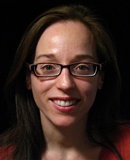An afternoon session at the Council on Foundations conference on Sunday about international development and philanthropy’s role highlighted some disagreement about where foundations can add the greatest amount of value. This seems a fundamental question, definitional in nature, and frankly not one that the foundation audience really grabbed onto.
First an overview: the panelists in this session were Todd Moss, Vice President for programs at the Center for Global Development, Jennifer Barsky, partnership coordinator at the IFC, and Dr Gerry Salole, chief executive of the European Foundation Centre.
Moss opened the session by presenting three numbers he views as relevant to the future of philanthropy in development: 3, 30 and 300. The 3 represents the $3 billion in grants the Bill and Melinda Gates Foundation has given (last year, according to Moss’s comments); $30 billion is the foreign aid engagement of the US government; $300 billion is the amount of money in the coffers at the Central Bank of India.
This last number gets at the heart of Moss’s overall point. In brief, in a world where the majority of the world’s poor live in middle income countries with growing economies (think India, China, Brazil, Thailand) does money actually represent the greatest source of value that American foundations can provide? His implication, by my read, was no.
Jennifer Barsky followed by outlining what she sees as three key trends in development that donors at all levels need to be aware of. These trends include movement towards a cashless society (replaced by funds and value transfer through distributed mobile technology), shifts from subsistence farming to productive farming with concomitant urban migration, and the lifting of access to finance as a major constraint to development through the proliferation of private sector solutions to financial inclusion.
Gerry Salole spoke third and with a much less macro-trend perspective. If anything, Dr Solale was the micro-guy. He criticized a foundation tendency to approach philanthropy through a ‘colonial’ model and pointed to a change in developing countries where there are more native people working in social organizations on the ground. His encouraged organizations to ‘work with what is there’ and pointed to examples of engagement with diaspora groups to identify useful and effective approaches of working in particular countries.
The moderator peppered the comments of the panellists with brief survey questions that audience members could respond to via text or twitter. The questions posed set up some either/or structures that Dr Salole for one said made him ‘uncomfortable’. Keeping in mind the limits in how one could respond, the typical answers nonetheless highlighted conflict between what the panellists were saying about change and what audience members tend to do. For example, when asked what to do with a $250,000 windfall grant the top choice was split between granting to an NGO in the foundation’s ‘mission’ or using the funds to convene actors to ‘break an impasse’. In other words, tactical uses along the lines of ‘more of what we do already’.
Throughout this session – as well as the others dedicated to global giving – participants referred a number of times to the role of philanthropy on the global stage as offering ‘catalytic funding’ or ‘venture funding’. The theory here is that foundations and independent donors are in a position to take risks and try new approaches that, when proven by private philanthropy, can then be brought to scale by the government.
No one seemed to question the role of governments and multilaterals as those who step in AFTER an idea is tested, but the idea that foundations are risk takers is hugely problematic and not really explored. Peter Laugharn, executive director of the Firelight Foundation and the panel moderator, said on more than one occasion that private foundations are in fact the ONLY players in international development who can take the long view, since they are not beholden to the annual or even quarterly budget limitations of a government, multilateral or corporate donor. And yet foundations don’t really do that. As a whole, they are some of the most conservative, risk-adverse, slow-to-change institutions out there. They are NOT widely thinking of their role as testers of compelling but untested ideas. They don’t as a group have any idea how to react to a Jennifer Barsky prediction that developing countries are going cashless or to a Todd Moss provocation that money might not be the greatest constraint for countries with a large number of poor people or a Gerry Salole admonition to move away from the colonialist model. And if foundations cannot respond to the new and untested, what value do they bring?
For my part, I didn’t see many grappling with those questions of identity.
Source
First published on 12 April 2011 at http://www.philanthropyaction.com




Comments (0)